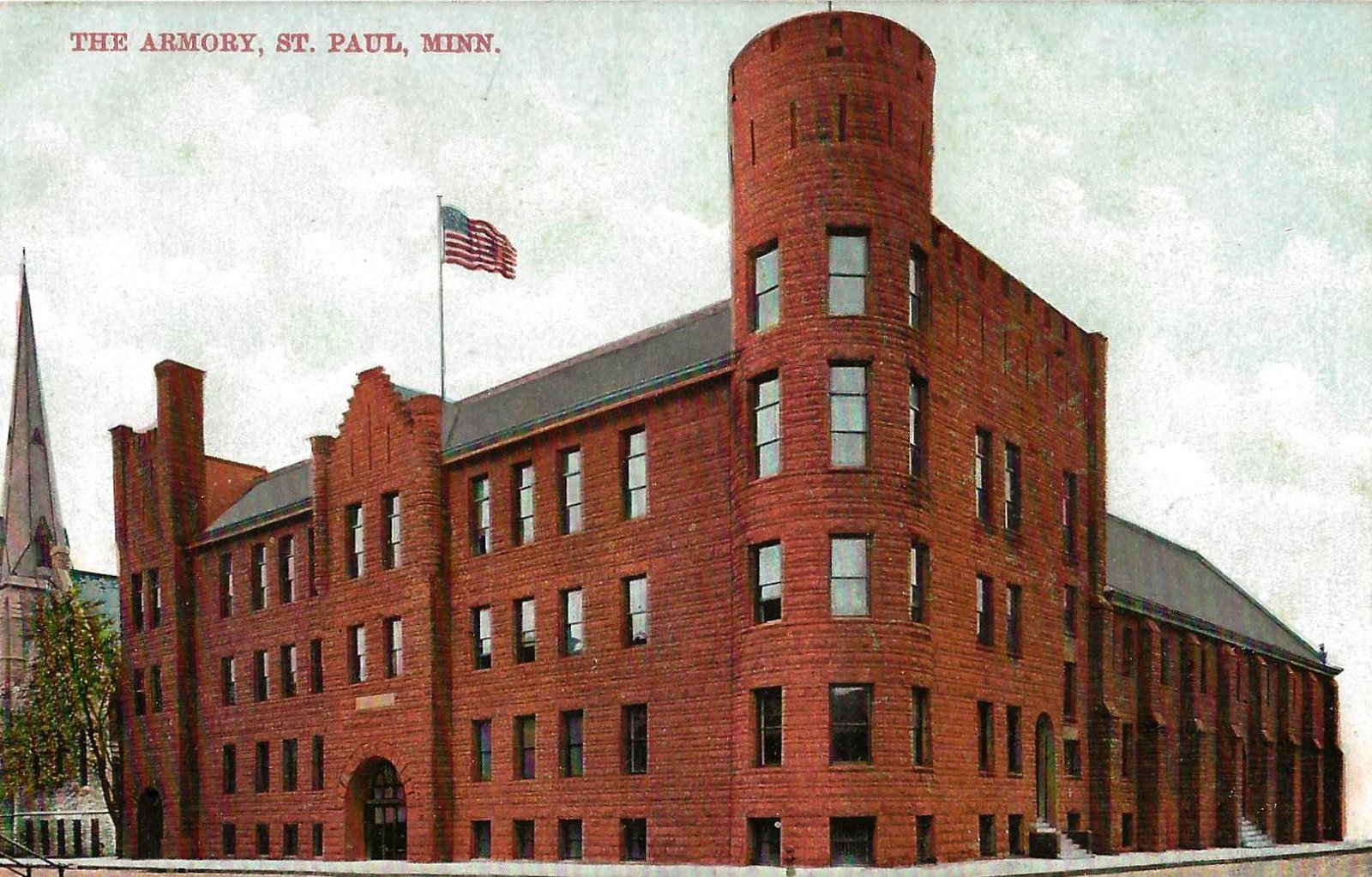Mary Colter’s Big Break
Future architect and decorator Mary E. J. Colter (1869 – 1958) combined her talents for teaching, exhibiting art, and lecturing at women’s clubs in 1906. That was the year the General Federation of Women’s Clubs held its national biennial convention in St. Paul. Colter volunteered to serve on the host city’s Art and Decorations committees.
Colter’s role gained greater importance when a construction delay prevented the convention from being held in a new auditorium building. The Biennial was relocated to the St. Paul Armory, a building commonly occupied by National Guard troops. With help from her students, Colter transformed the military hall into a meeting space suitable for a national convention.
Postcard of the Saint Paul Armory, c. 1904 – 1915. (CC BY-SA 2.0)
The official report of the Biennial recorded, “…the Armory, under the magic touch of many willing hands directed by the marvelous brain of one gifted woman, has been almost metamorphosed.” The Report of the Decorations Committee includes a description of lattices with fresh green vines, green burlaps decorated in peacock shades, and bay trees, as well as a suite of rooms furnished with work made by Colter’s students. Mentions in the school’s annual report (“a thing of beauty unique in design”) and the local press were effusive:
It has surprised even St. Paul, which has learned to think reasonably well of itself, that the scheme and the execution of the decorations at the Armory hall should have been of such unique, such individual quality, so perfectly adapted to its uses in space and proportion, so finely adapted toward a higher use in resting eye and stimulating spirit….It was something more than mere decoration; it was the creation of an integral part of the building plan.
….Miss M.E.J. Colter has contributed very definitively through her work in the Mechanic Arts high school, to the arts and crafts development of the city. She was assisted in the manifesting of this scheme by the pupils of this school. In another country, say, in Japan, whence she has drawn much of her inspiration, this decoration would be rewarded with a permanent place.
Unfortunately, no photographs of this decoration have been found.
Colter continued to teach for one more year after this decorating success. Concluding her sixteen-year tenure at Mechanic Arts High School, she took a position developing the Decoration Department for the Frederick and Nelson department store in Seattle. It is possible that the national exposure to her decorating ability and her networking with other successful women at the General Federation biennial led to this opportunity. In 1910, Colter transitioned from a freelancer to a full-time employee with Fred Harvey, the company where she would make her reputation as a decorator and architect.
Please subscribe to The Architectress.
Sources:
Special Collections, Minnesota State Archives, St. Paul, Minnesota.
George Weitbrecht, “Report of the Principal of the Mechanic Arts High School,” Forty-Seventh and Forty-Eighth Annual Report of the Board of School Inspectors of the City of St. Paul (St. Paul: E.S. Ferry Printer, 1906), 128.
M.E.J. Colter, untitled typescript autobiography. Phoenix: Heard Museum Digital Library, c. 1948-1958
